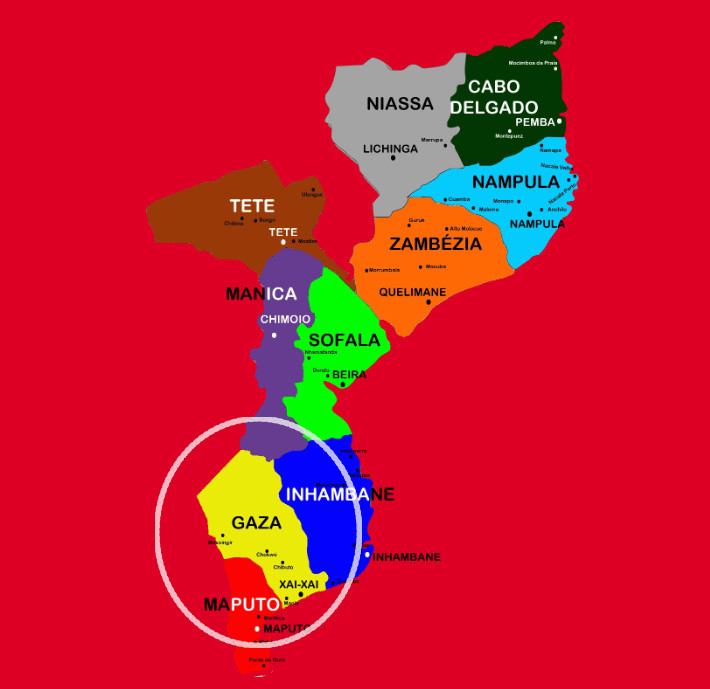MozambiqueExpert - Investors Guide
Invest in Gaza Province

Infrastructure Sector
Gaza Province: The Infrastructure Foundation of Southern Mozambique's Development
The Government of Mozambique has prioritized the infrastructure sector in its development strategy, aiming to foster economic growth, enhance regional connectivity, and address chronic underdevelopment. Gaza Province, located in the south, is strategically important due to its extensive international borders with South Africa and Zimbabwe, its coastline along the Indian Ocean, and its position as a corridor hub. While Gaza benefits from foundational transport networks and significant new capital projects, its infrastructure stability remains critically vulnerable to environmental shocks and historical regional disparities.
1. Existing Infrastructure and Regional Corridors
Gaza's infrastructure network is primarily designed to facilitate connectivity between the national capital, Maputo, and the central and inland regions of Southern Africa.
Road and Rail Network
EN1 Highway: Gaza Province is traversed by Mozambique's principal north-south artery, the EN1 highway. This road connects the provincial capital, Xai-Xai, to Maputo, a distance of approximately 224 kilometers.
Limpopo Railroad: The province is also served by the Limpopo Railroad (Southern System), which runs through districts like Chókwè, connecting Maputo and Chicualacuala.
Road Quality: Despite the existence of a classified road network in Mozambique, the country as a whole ranks poorly for both road density and quality, ranking 133rd out of 140 economies in road quality as of 2019. Rural connectivity remains a major challenge.
Air Transport
Historically, Gaza was notable for being the only province in Mozambique without an airport. This gap was addressed with the inauguration of the Chinese-financed Xai-Xai Chongoene Airport in December 2021. This airport has an annual passenger capacity of 220,000 and is intended to boost tourism, industry, agriculture, and logistics, contributing to regional and national economic growth.
Commercial Centers
Commercial activity in Gaza is concentrated in Xai-Xai, the administrative, commercial, and coastal hub. The town of Chókwè is also regarded as the economic capital of Gaza Province. The service industry in these centers caters to the financial, public, and extractives sectors, and international organizations.
Development Corridors
Gaza falls within or borders major economic corridors designed to link landlocked Southern African nations (like Zimbabwe and South Africa) to the Indian Ocean ports.
Limpopo Corridor: Gaza is a key area within the planned Limpopo Corridor, which is intended to connect Maputo with Harare in Zimbabwe. Chókwè is located in the Limpopo Corridor.
Maputo Corridor: Gaza is adjacent to the Maputo Development Corridor, which links Maputo and its port with South Africa's industrial heartland. The success of this corridor relies heavily on foreign investment in infrastructure provision and the establishment of major industries.
2. Opportunities and Strategic Investment
Recent investments in Gaza are focusing on heavy industry export infrastructure and diversifying transport capacity to support economic megaprojects.
Port Infrastructure for Mining: The development of the heavy mineral sands project in Chibuto required new logistical infrastructure. In July 2024, the government created and granted an area of port jurisdiction in the district of Chongoene to implement the necessary infrastructure for the transport of heavy sands.
The project involves a Public-Private Partnership (PPP) concession to Sociedade Terminal de Minérios de Chongoene, SA, a consortium including the Chinese company Desheng Port, S.A., and the state-owned Portos e Caminhos-de-Ferro de Moçambique (CFM).
The first phase investment for the Chongoene Port Terminal concession was granted at $55 million.
Developing New Corridors: A significant infrastructure upgrade is planned with the construction of a new bridge over the Save River. This bridge aims to connect Massangena in Gaza with districts in Manica Province, creating an alternative north-south corridor to reduce reliance on the EN1 highway and enhance access for remote districts.
Special Economic Zones (SEZs): Gaza is designated as one of Mozambique's six provinces with a Special Economic Zone. SEZs are designed to attract investment through incentives such as exemptions from certain taxes, customs, and foreign exchange obligations. The nascent industrial base in Gaza needs to leverage these SEZ incentives to grow.
Tourism Infrastructure: The tourism sector is also benefiting from infrastructure planning, including the long-term plan to transform the Massingir airstrip into an international gateway capable of accommodating large aircraft within 10 to 20 years.
3. Challenges and Vulnerabilities
Despite investment, Gaza's infrastructure sector is plagued by systemic issues, particularly regarding resilience, rural access, and governance.
Climate Vulnerability and Disruptions
Gaza is acutely vulnerable to hydrological extremes due to the Limpopo River, which is central to its economic activity. This climate variability results in chronic exposure to both drought and catastrophic flooding.
Road Interruptions: Flooding regularly disrupts road networks. In January 2025, approximately 22,000 people in the Chibuto district were effectively besieged due to roads being interrupted by the high flow levels of the Limpopo River.
Need for Resilient Infrastructure: Investing in climate-resilient infrastructure is a high priority, especially given the poor state of roads in flood-prone regions like the lower Limpopo watershed.
Rural Access and Disparities
Overall disparities in access to basic infrastructure have been growing between rural and urban areas across Mozambique, especially in transport.
Rural connectivity and the quality of rural roads are major challenges.
Districts like Guijá reported extremely low access rates, with only 1% of households having access to electricity. Rural areas generally face challenges in access to transportation, healthcare, and education.
Governance and Environmental Conflicts
Regulatory Oversight: The Provincial Service for Infrastructure Development (SPI-Gaza) is the entity responsible for monitoring and ensuring the implementation of national policies for infrastructure in the province, covering areas like roads, bridges, and energy.
Environmental Malpractice: Issues have arisen regarding environmental governance and extractive projects. In April 2021, SPI-Gaza issued a notification for the interruption of road improvement works by Dingsheng Minerals in Chongoene because the works were being executed without proper authorization and violated existing legislation for infrastructure on public domain land. Such construction and improvement projects require documentation like a DUAT (land use right), a construction license, and an Environmental Impact Assessment (EIA).
Risk of Enclave Development: Mega-projects, while requiring infrastructure investment, have often had limited effects on the broader economy, with gains concentrated near the capital and its hinterlands. The challenge in Gaza is to ensure that industrial clusters, like the one planned around Chibuto/Xai-Xai, do not become unbalanced economic 'enclaves' and that new infrastructure benefits the wider community.Related Readings
